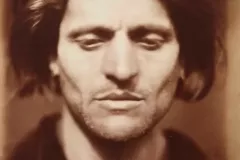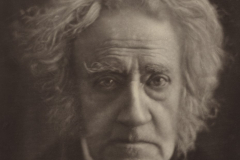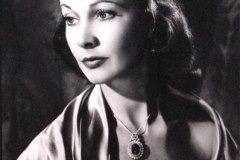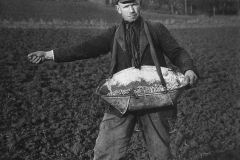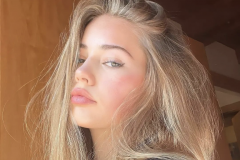I&P Assignment 1: The Non-Familiar: write-up
Your first assignment is to make five portraits of five different people from your local area who were previously unknown to you. You will almost certainly find it challenging to take photographs of people you don’t know; it’s often much easier to photograph somebody you’re already familiar with. This could be referred to as the ‘comfort zone’ – and for the purposes of this assignment you will be specifically required to leave it! Leaving technical photographic considerations aside, there are a whole range of issues to deal with in making a portrait of somebody you don’t know. This additional skill set should arguably be in every photographer’s kitbag, regardless of what genre of photography they end up working in. The ability to concentrate on technical and aesthetic considerations whilst engaging with a complete stranger brings a plethora of difficulties. Added to the fact that most people aren’t that comfortable with having their photograph taken anyway, then you can see why this could become a minefield! Just as you learn the techniques behind how your photographic equipment works, there are techniques you can learn about how to photograph people you’ve never met before. Many historical and contemporary portrait photographers have written about this, and one piece of advice stands out:
Tip If it is at all possible, spend time with your subject, getting to know them and triggering a dialogue with them, before even showing them your camera.
Research
(Portrait Notes and links)
‘…at every level, and within every context portrait photography is fraught with ambiguity’-Graham Clarke The Portrait in Photography
The most difficult thing for me is a portrait. You have to try and put your camera between the skin of a person and his shirt.-Henri Cartier-Bresson
“A photographic portrait is a picture of someone who knows he is being photographed.”
– Richard Avedon
“A portrait isn’t a fact but an opinion – an occasion rather than a truth.”-Richard Avedon
Portraiture has always had a degree of propaganda about it. From the pre-photography days when portraits were the domain of the wealthy, they served to create a ‘fiction’ about the sitter, usually his (sometimes her) greatness or some achievement with a dose of symbolism to send a message or two. Posing for posterity played a part, and the artist had the creative task to create a likeness and fiction.
Although some artists had begun to create scale for their imagery (Albrecht Dürer’s woodcuts and engravings), the invention of photography democratised image-making on a global scale, and soon people from all classes could have their portraits done. Although classical art has cast a long shadow and has had a strong influence over photographic practice and theory, photography soon developed schools of thought and practice and all have contributed to the portrait ouvre. Right up to the present day, with social media and technological advances in image-making, portraiture is more ubiquitous than ever. We are bombarded with saturation coverage of celebrities, their lifestyles and looks, as well as the ubiquitous ‘selfie’ with its language of poses and pouts, or as Wim Winders calls it ‘faux-photgraphy’.
As I researched different practitioners both past and present, I considered different approaches and styles, including the high ideals of Julia Margaret Cameron-looking for the inner greatness or soul of her sitters, the documentary style of August Sander, the exploration of the democratisation and ubiquitousness of imagery-their value and hierarchy by Kalpesh Lathigra, the story-telling of Samual Fosso, the black and white and sometimes surreal images of Angus McBean as well as the ubiquitous poses found on Instagram.
Preparation
There was no getting away from it, I was coming into this assignment with some pre-conditioned notions of what portraiture should be, including the notion that a portrait should show something that is inherent in the sitter’s personality, show their ‘best side’, or reveal something about them.
Before I approached anyone, I considered the following:
- Would I go for a full body shot or just the head
- The type of lens and aperture I would use
- Would I include elements of their context? For example, if they were at work, to include things that would contextualise what they were doing, and give it a more documentary angle
- As the encounter was going to be brief, would lack information affect the portrait and end up just being a photo of a person at a certain time in a certain place?
- What role would captions or text play? Use or not to use?
- Whether to shoot in colour or black and white?
- aspect of photos-landscape (capture more context), portrait or 1×1?
- How to make the images work as series
At this point in time I feel a portrait is a representation of a person at a specific point in time. The interplay between the sitter, the photographer and the viewer give it its expression, but that may change from viewer to viewer. Photographs are malleable and the malleability of a portrait is a function of many things- context, worldview, culture, social values, where an image is first seen or experienced, what the story behind the image is and even what other people (academics, curaters,critics etc) in the eco-system of photographic practice write.
With that in mind, I decided from the outset on the following:
- I would take headshots to focus on the face and not contextualise them with any background elements
- I would shoot in B& W-the reason for this was to have a sense of consistency and help them work as a series
- The images would be in 1×1 format
- Despite what I learned from the people about themselves, I would use minimal captions. As I can’t control the malleability of an image, I will let it speak for itself, and the viewer can (and will anyway in most cases) fill in the gaps between the caption and the image.
Reflection on the images
This assignment took me out of my comfort zone, challenged me, and taught me some valuable lessons about portrait photography albeit in a cold encounter type of situation. It also helped me form an opinion, find a point of view about portraits and what they mean.
The five people in the images come from different backgrounds, cultures and professions. After the first 2 portraits (portrait_1 and portriat_2), I lost some of my apprehension and was a bit more considered when taking the actual photographs, I also talked to the people more, and this helped everyone relax.
Julie (portrait_1) was the first person I asked, and I noticed how she put on her ‘photo face’ once I lifted the camera and began to shoot. She commented (light-heartedly) that she wasn’t ready for the photo (make-up etc) and to be honest, I was just glad she said yes and ended up only taking a couple of frames. With a bit of newfound confidence, I found the second portrait, Hakan (portait_2) easier, relaxed a bit, and was more aware of what I was doing and how I wanted to do it. The third image, Howard (portrait_3), is more documentary in approach as it includes him repairing a clock. In my discussions with him, I learned that he was a clock restorer of repute and had an encyclopedic knowledge of clocks. It just felt right to include it this way, but it does break the consistency somewhat. I considered using another image-either the one of him sitting on his sofa or in the doorway, but decided against it.
The final two images, Oli (portrait_4) and David (portrait_5) are exactly how I wanted them, I took my time, kept them talking, focused on the face, used a shallow depth of field, and feel these are the most resolved of the lot. I also employed a tip from Cartier Bresson, who in the documentary ‘L’amour tout court’, comments on taking portraits he often took the images without the sitter realising-I did this with David (portrait_5), chatting away but firing on silent mode, I like this image a lot. Key things I learned from the assignment include:
- Talking and getting into conversation helps relax everyone and the images are often the better for it. Sometimes its just not possible to make that connection and that’s fine.
- It’s impossible to capture the essence of a person in one image-what you can achieve is a moment in time with that person in it.
- Photographs are malleable so trying to control the narrative is futile, so I’d rather let the images speak for themselves and let the viewer interpret them as they see fit (which they will do anyway)
- The idea that a portrait can capture the essence of a person is an ideal, an aspiration, which may be noble but could be likened to chasing rainbows.
In conversations with the people in this series I learned a lot about them, their lives, their stories. Moving forwards, I would like to explore telling stories visually about aspects of people’s lives, maybe taking the more documentary approach, working out how to visually achieve that, and how to combine context, words and images to best effect.
References
Clarke, Graham,1992,The Portrait in Photgraphy,London,Reaktion Books Ltd
Clarke,Graham,1997,The Photograph,New York,Oxford University Press
Cole,Teju,2018,There’s Less to Portraits Than Meets the Eye, and More https://www.nytimes.com/2018/08/23/magazine/theres-less-to-portraits-than-meets-the-eye-and-more.html (accessed 05/01/2023)
Ewing,William A,2006,FACE The New Photographic Portrait,London,Thames & Hudson
Farago,Jason,2020,Seeing Our Own Reflection in the Birth of the Self-Portrait,NYT https://www.nytimes.com/interactive/2020/09/25/arts/durer-self-portrait.html (accessed 01/01/2023)
Higgans, Charlotte,2015,Julia Margaret Cameron: soft-focus photographer with an iron will,https://www.theguardian.com/artanddesign/2015/sep/22/julia-margaret-cameron-victorian-portrait-photographer-exhibitions (accessed 05/01/2023)
Lathigra,Kaplesh, 2023, A Democratic Portrait https://www.kalpeshlathigra.com/works/86488292/ (accessed 08/01/2023)
O’Byrne,Raphaël, 2001,H Cartier Bresson, L’amour tout court (https://vimeo.com/106009378 (accessed 12/01/2023)
The Portrait Issue,01/2023, British Journal of Photgraphy
50 inspirational quotes for photographers https://independent-photo.com/news/photography-quotes/ (accessed 01/01/2023)


